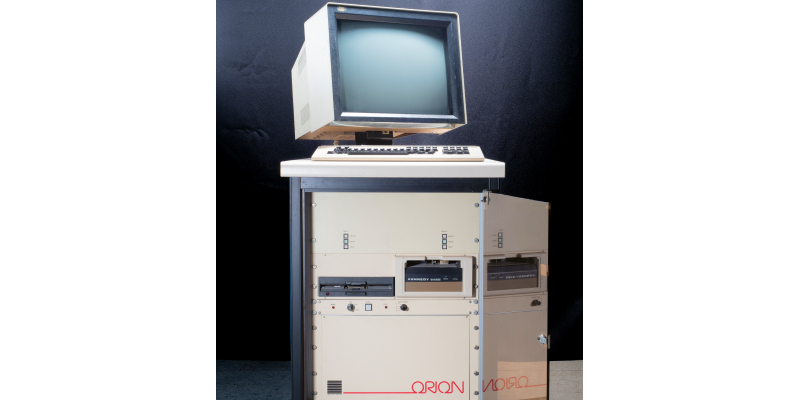
Orion super-minicomputer
This was Colin Runciman’s machine. It is an Orion super-minicomputer made by High Level Hardware in Oxford. He bought it originally for our work on the STARship project, funded by SERC (the former name of EPSRC). The aim was to develop new methods and tools for the Specification, Transformation And Reuse of software. This project was in the late 1980s.
Colin chose the Orion because it was microcodeable: it was possible to customise the way the machine worked by encoding specialised instructions close to the hardware level. It used the logic-programming language Prolog for the software tools.
Researchers at Cambridge had developed a translation of Prolog into a compact code for a virtual (or imaginary) machine. Orion engineers developed a microcoded implementation of the machine, making their Prolog system 10x faster than its rivals.
Alas, in a subsequent "upgrade" of these machines, the microcodeable processor was replaced by a simpler and faster (but not 10x faster!) RISC processor.
Funding from grants typically lasts 3 years. Each time a grant is won, most often the computers used in research are bought. The research areas that involve hardware development or high performance computing are typically built in the Department to make interesting computer systems. Computer Science at York has always had a very strong reputation for research.
Related links
The Orion was a series of 32-bit super-minicomputers designed and produced in the 1980s by High Level Hardware Limited (HLH), a company based in Oxford, UK. The company produced four versions of the machine. All four machines employed the same I/O sub-system.
High Level Hardware was an independent British company formed in early 1982. The founding partners were both previously senior members of Research Machine's Special Projects Group. In 1984, as a result of that research, High Level Hardware launched the Orion, a high performance, microcodeable, UNIX superminicomputer targeted particularly at scientific applications such as mathematical modeling, artificial intelligence and symbolic algebra.
In April 1987 High Level Hardware introduced a series of Orions based upon the Fairchild Clipper processor but abandoned the hardware market in late 1989 to concentrate on high-end Apple Macintosh sales.
The original Orion employed a processor architecture based on Am2900-series devices. This CPU was novel in that its microcode was writable; in other words, its instruction set could be redefined. This facility was used to customise some Orions with instruction sets optimised to run the Occam and LISP programming languages or even to compute fractals
The CPU consisted of an ALU that was built around the Am2901 bit-sliced microprocessor. To this a byte manipulation unit was added which could perform the shifting, rotating and masking operation required for handling eight and sixteen bit data. Additional logic was provided to support both signed and unsigned two's complement comparisons in a single operation, multiple precision arithmetic and floating point normalization. Most operations could be performed in 150 ns, however the cycle time was variable from 125 ns to 200 ns under microprogram control so that timing could be optimised. A microsequencer, based around the Am2910, directed the control flow through the microprogram. It could perform branches, loops and subroutine calls most of which could be conditional on any of several CPU status conditions
Main memory was organised as 32-bit words with two-way interleaving, allowing 64 bits of data to be fetched or stored in one operation. In normal operation main memory was accessed via a virtual memory management unit.
The Orion I/O subsystems included a number of attached microcomputers to perform low level tasks such as running diagnostics and managing terminals and disks.
The Orion series was moderately popular with the computer science departments of British universities, including Westfield College, London, Bath, Edinburgh, Heriot-Watt, Kent, Southampton, Warwick, York, King's College, London. A typical multi-user Orion configuration would have had 8 MB of RAM, an SMD hard disk (e.g. a 168 MB Kennedy or a 434 MB Fujitsu Eagle), a 60 MB QIC-24 tape drive and 8 to 32 RS-232 terminal ports.